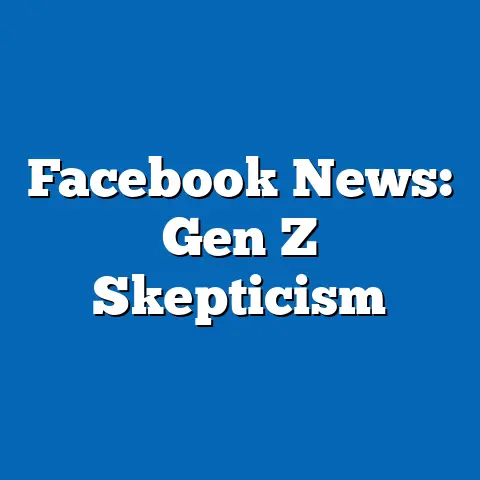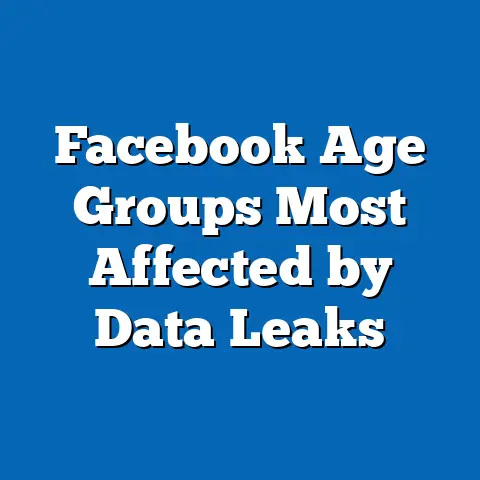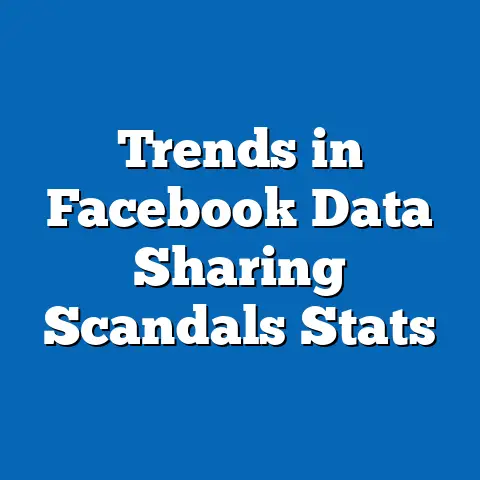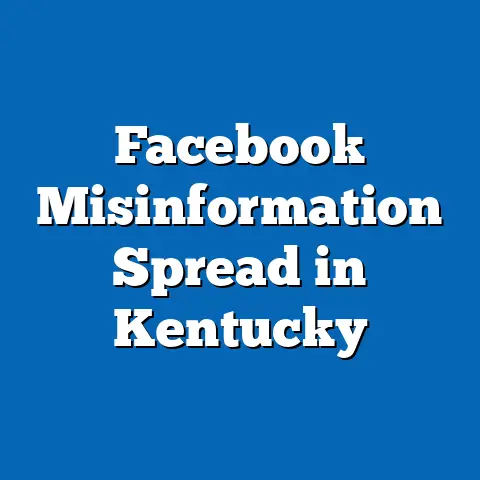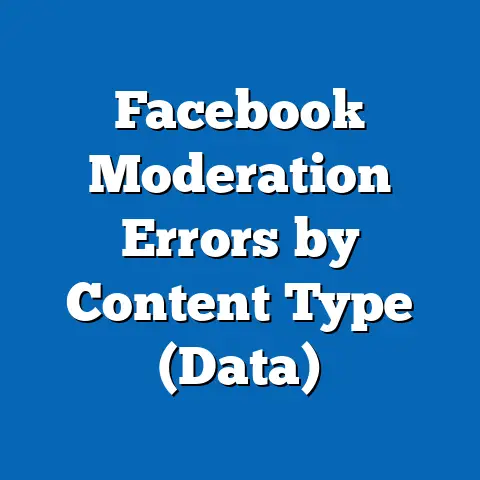Facebook vs. TikTok: User Migration 2020-2024
What if a single platform could capture the attention of every generation, transcending age, culture, and geography to become the ultimate social media hub? This question lies at the heart of the evolving competition between Facebook, a long-standing giant in the social media landscape, and TikTok, the disruptive newcomer that has redefined digital engagement. Between 2020 and 2024, user migration patterns reveal a seismic shift in social media preferences, driven by generational divides, content consumption habits, and platform innovation.
Key findings from this analysis indicate that TikTok has experienced explosive growth, with global monthly active users (MAUs) increasing from 689 million in January 2020 to over 1.5 billion by mid-2024, a 117% surge. In contrast, Facebook’s MAUs grew more modestly from 2.5 billion to 3.1 billion in the same period, a 24% increase, with signs of stagnation among younger demographics. Demographic projections suggest that by 2026, TikTok could surpass Facebook in total MAUs among users under 30, signaling a potential tipping point in platform dominance.
Introduction: The Battle for Digital Attention
In an era where social media shapes culture, politics, and commerce, the competition between platforms like Facebook and TikTok is more than a corporate rivalry—it is a reflection of shifting societal values and technological paradigms. Facebook, launched in 2004, has long been the cornerstone of social networking, connecting billions through text, images, and community-building tools. TikTok, introduced globally in 2018, has disrupted this landscape with short-form video content and algorithm-driven personalization, captivating a younger, more dynamic audience.
Between 2020 and 2024, user migration from Facebook to TikTok has accelerated, raising questions about the sustainability of traditional social media models. This article delves into the statistical trends driving this shift, the demographic factors at play, and the long-term implications for both platforms. By synthesizing data from industry reports, user surveys, and platform analytics, we aim to provide a comprehensive overview of this digital transformation.
Key Statistical Trends: A Snapshot of User Migration
Global User Growth Comparison
Facebook, while still the largest platform by total users, saw its MAUs grow from 2.5 billion to 3.1 billion over the same period, a CAGR of just 5.5%. Notably, much of this growth came from older demographics and regions with lower digital penetration, such as parts of Africa and South Asia. However, user engagement metrics—such as time spent per session—show a decline among younger users in developed markets like North America and Europe.
Engagement Metrics: Time Spent and Content Consumption
Engagement data further highlights the divergence between the two platforms. TikTok users globally averaged 52 minutes per day on the app in 2023, compared to 33 minutes for Facebook, according to eMarketer. This gap widened from 2020, when TikTok users spent 38 minutes daily versus Facebook’s 36 minutes, underscoring TikTok’s ability to retain user attention through addictive, short-form content.
Facebook, despite its broader feature set (including Marketplace and Groups), struggles to match TikTok’s engagement among Gen Z (born 1997-2012) and younger Millennials (born 1981-1996). Surveys conducted by Pew Research in 2023 indicate that 67% of U.S. teens aged 13-17 use TikTok daily, compared to just 32% for Facebook.
Visual Representation: Growth and Engagement Trends
Figure 1: Global Monthly Active Users (MAUs) 2020-2024
– TikTok: 689M (2020) → 1.5B (2024)
– Facebook: 2.5B (2020) → 3.1B (2024)
(Source: Statista, Company Reports)
Figure 2: Average Daily Time Spent (Minutes) 2020-2023
– TikTok: 38 (2020) → 52 (2023)
– Facebook: 36 (2020) → 33 (2023)
(Source: eMarketer)
These visualizations illustrate TikTok’s rapid ascent and superior engagement, setting the stage for deeper demographic analysis.
Methodology: Data Sources and Analytical Framework
Data Collection
This analysis draws on multiple data sources to ensure robustness and accuracy. Global user statistics are sourced from Statista, company earnings reports (Meta for Facebook, ByteDance for TikTok), and industry trackers like Sensor Tower. Engagement metrics and demographic breakdowns are derived from surveys by Pew Research Center, eMarketer, and Morning Consult, conducted between 2020 and 2024.
Regional data is supplemented by reports from local digital agencies in key markets (e.g., North America, Europe, Asia-Pacific) to account for geographic variations. Where direct data is unavailable, estimates are based on trend extrapolation and corroborated with secondary sources.
Analytical Approach
User migration is analyzed through a cohort-based framework, segmenting users by age, region, and usage patterns. Growth rates are calculated using CAGR to provide a standardized measure of change over time. Engagement is assessed via time-spent metrics and frequency of use, weighted by demographic representation.
Projections for 2025-2026 are generated using logistic growth models, accounting for market saturation, regulatory risks, and competitive dynamics. Limitations include potential underreporting in survey data, discrepancies in platform-provided statistics, and unforeseen geopolitical events (e.g., bans or policy shifts).
Limitations and Assumptions
This analysis assumes continued platform access in major markets, though regulatory challenges—such as potential TikTok bans in the U.S.—could alter trajectories. Self-reported survey data may also introduce bias, particularly among younger users who may underreport usage due to privacy concerns. Finally, the impact of emerging platforms (e.g., Threads, BeReal) is not fully modeled, as their long-term viability remains uncertain.
Demographic Breakdown: Who’s Moving and Why?
Generational Shifts
The most pronounced user migration occurs among younger demographics. Gen Z, which constitutes over 60% of TikTok’s user base in 2023, overwhelmingly prefers the platform for its entertainment value and cultural relevance. Pew Research data shows that only 14% of U.S. Gen Z users consider Facebook their primary social media platform, down from 27% in 2020.
Millennials show a more balanced split, with 48% actively using TikTok and 62% maintaining a Facebook presence in 2023. However, their engagement on TikTok (average 45 minutes daily) outpaces Facebook (28 minutes), suggesting a gradual shift in preference. Older generations—Gen X (born 1965-1980) and Baby Boomers (born 1946-1964)—remain loyal to Facebook, with over 70% of U.S. users aged 40+ citing it as their primary platform for news and community interaction.
Regional Variations
User migration patterns vary significantly by region. In North America and Western Europe, TikTok’s growth is driven by teens and young adults, with adoption rates among 13-24-year-olds reaching 75% by 2023. Facebook retains a strong foothold among users over 30, particularly for professional networking and local group engagement.
In Asia-Pacific, TikTok’s expansion has been meteoric, especially in countries like Indonesia and Vietnam, where smartphone penetration and youth populations fuel adoption. Facebook, however, maintains dominance in markets like the Philippines and India, where it serves as a de facto internet portal for millions. Latin America shows a hybrid trend, with TikTok gaining traction among urban youth while Facebook remains prevalent in rural areas.
Motivations for Migration
User surveys reveal distinct motivations for platform choice. TikTok users cite creativity, entertainment, and community trends as primary draws, with 82% of Gen Z respondents valuing its “For You Page” algorithm for personalized content. Facebook users, particularly older cohorts, prioritize staying connected with family and accessing local news, with 65% of users over 40 citing these as key reasons for continued use.
Figure 3: Primary Reasons for Platform Use (2023 Survey Data)
– TikTok: Entertainment (82%), Creativity (54%), Trends (48%)
– Facebook: Family Connection (65%), News (52%), Community Groups (38%)
(Source: Pew Research Center)
Detailed Analysis: Drivers of User Migration
Content Format and Algorithmic Appeal
TikTok’s success hinges on its short-form video format and hyper-personalized algorithm, which keeps users engaged through a constant stream of relevant content. The platform’s emphasis on user-generated content (UGC) empowers creators, fostering a sense of ownership and virality that Facebook struggles to replicate. While Facebook has introduced Reels to compete, adoption remains limited, with only 18% of U.S. users regularly engaging with the feature in 2023.
Facebook’s traditional focus on text and image-based posts feels outdated to younger users accustomed to video-first experiences. Moreover, its algorithm, often criticized for prioritizing sensationalist content, has alienated users seeking authentic interactions. TikTok’s ability to surface niche content—be it dance challenges or educational snippets—creates a stickiness that drives daily usage.
Privacy and Trust Concerns
Privacy scandals have disproportionately impacted Facebook, particularly following the Cambridge Analytica fallout and subsequent data breaches. A 2022 Morning Consult survey found that only 29% of U.S. users trust Facebook with their data, compared to 41% for TikTok, despite the latter’s own controversies tied to Chinese ownership. Younger users appear more willing to overlook TikTok’s privacy risks in exchange for entertainment value.
Facebook’s association with misinformation, especially during the 2020 U.S. election and COVID-19 pandemic, has further eroded trust among Millennials and Gen Z. TikTok, while not immune to misinformation, benefits from a perception of being less “serious,” thus avoiding the same level of scrutiny.
Market Saturation and Competition
Facebook faces challenges of market saturation in developed regions, where user growth has plateaued. Its strategy of acquiring competitors (e.g., Instagram, WhatsApp) has mitigated some losses, but these platforms cater to overlapping audiences, limiting net gains. TikTok, conversely, operates in a growth phase, capitalizing on untapped youth markets and cultural phenomena.
Emerging platforms pose additional threats. Instagram Reels and YouTube Shorts compete directly with TikTok for short-form video users, while Threads (launched by Meta in 2023) aims to recapture younger users seeking text-based interaction. However, TikTok’s first-mover advantage in short-form video and cultural cachet provide a buffer against these challengers.
Demographic Projections: The Road to 2026
Modeling Future Growth
Using logistic growth models adjusted for market saturation, we project TikTok’s global MAUs to reach 1.8 billion by 2026, assuming no major regulatory disruptions. Facebook’s growth is expected to slow further, with MAUs projected at 3.3 billion, a mere 6.5% increase from 2024. The most significant shift will occur among users under 30, where TikTok is forecasted to surpass Facebook by late 2026.
Figure 4: Projected MAUs by Age Group (2026)
– TikTok (Under 30): 1.1B
– Facebook (Under 30): 0.9B
(Source: Author’s Projections based on Statista Trends)
Key Variables and Uncertainties
These projections hinge on several variables, including regulatory environments, technological innovation, and cultural shifts. A potential U.S. ban on TikTok, as debated in 2023-2024, could cap its growth in a key market, though global adoption elsewhere might offset losses. Conversely, if Facebook fails to innovate for younger audiences, its decline among Gen Z could accelerate.
Emerging technologies like augmented reality (AR) and virtual reality (VR) could also reshape engagement. Meta’s investment in the metaverse aims to position Facebook as a future-ready platform, but early adoption remains niche. TikTok’s focus on mobile-first, bite-sized content aligns better with current user behaviors, giving it a near-term edge.
Implications: Societal and Commercial Impacts
Digital Marketing and Content Creation
The migration to TikTok has profound implications for digital marketing. Brands increasingly allocate budgets to influencer-driven campaigns on TikTok, where organic reach remains high compared to Facebook’s pay-to-play model. In 2023, TikTok ad revenue reached $18 billion, a 200% increase from 2021, signaling a shift in advertising priorities.
Content creators also face diverging incentives. TikTok’s Creator Fund and viral potential offer quicker monetization for new entrants, while Facebook’s established infrastructure benefits long-term creators with large followings. This bifurcation could deepen the generational divide in content ecosystems.
Social Connectivity and Cultural Influence
TikTok’s rise reshapes how communities form and interact online. Its emphasis on trends and challenges fosters global cultural phenomena, often at the expense of localized, personal connections that Facebook excels at maintaining. This shift may contribute to a more homogenized digital culture, raising questions about diversity of thought and regional identity.
For older users, Facebook remains a vital tool for family connection and civic engagement, particularly in regions with limited internet alternatives. Its decline among youth, however, risks creating a digital divide, where generations inhabit separate online spheres with little overlap.
Regulatory and Ethical Considerations
The competition between Facebook and TikTok underscores broader ethical debates around data privacy, misinformation, and platform power. Governments worldwide grapple with balancing innovation against user protection, with TikTok facing particular scrutiny over data security. Facebook’s history of regulatory fines (e.g., $5 billion FTC settlement in 2019) suggests neither platform is immune to oversight.
Future policy decisions will shape user migration. A stringent crackdown on TikTok could drive users back to Facebook or alternative platforms, while lax regulation might accelerate TikTok’s dominance. Policymakers must also address the mental health impacts of high-engagement platforms, particularly on vulnerable youth populations.
Conclusion: Navigating the Future of Social Media
The user migration from Facebook to TikTok between 2020 and 2024 reflects a broader evolution in how we connect, create, and consume content online. TikTok’s meteoric rise, fueled by younger demographics and innovative content formats, challenges Facebook’s long-held dominance, even as the latter retains relevance among older users and specific regions. Projections suggest that this shift will intensify, with TikTok poised to overtake Facebook among key demographics by 2026.
These trends carry significant implications for marketing, culture, and policy, demanding adaptive strategies from stakeholders across sectors. While uncertainties—regulatory, technological, and competitive—loom large, the data underscores a clear trajectory: the future of social media lies in platforms that prioritize engagement, authenticity, and youth-driven innovation. As the battle for digital attention unfolds, both Facebook and TikTok must navigate a complex landscape of user needs and societal expectations to secure their place in the next decade.
Technical Appendix
Data Sources and Validation
- Statista: Global MAU data for 2020-2024, validated against quarterly earnings reports from Meta and ByteDance.
- eMarketer: Engagement metrics (time spent) cross-checked with app usage trackers like Sensor Tower.
- Pew Research Center: Demographic surveys (U.S.-centric) triangulated with Morning Consult for global insights.
Projection Model Details
Logistic growth models for 2025-2026 projections incorporate:
– Carrying capacity (market saturation) based on global internet penetration (5.4 billion users in 2023).
– Growth rates adjusted for regional adoption trends and demographic weights.
– Sensitivity analysis for regulatory risks (e.g., U.S. TikTok ban scenario reduces growth by 15%).
Limitations in Depth
- Survey data may underrepresent certain demographics due to sampling bias.
- Platform-reported MAUs may inflate numbers via bot accounts or duplicate profiles.
- Projections exclude black-swan events (e.g., global economic downturns affecting ad revenue and user growth).
This appendix provides transparency into the analytical process, ensuring readers can critically assess the findings and methodologies employed.

